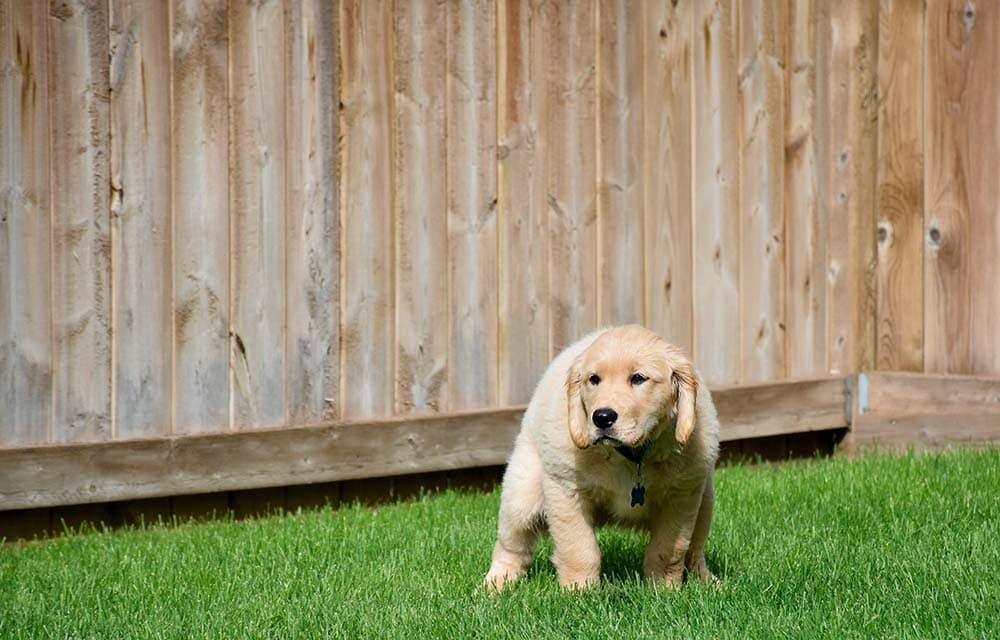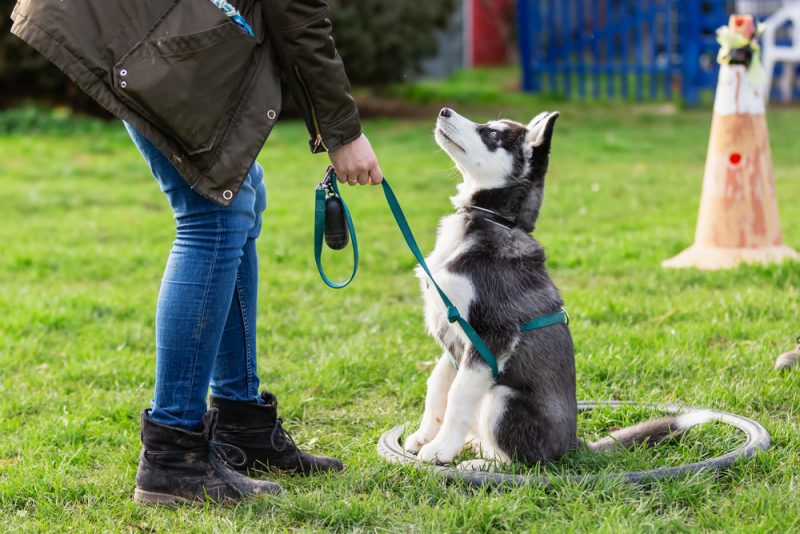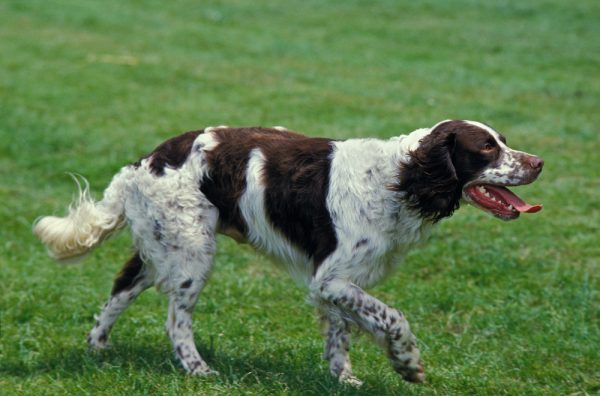Even when a puppy learns to go potty outside, it is up to the owner to know when to let them out to avoid indoor accidents. Communication is crucial; unfortunately, dogs can’t clearly tell us what they need.
While dogs may head to the door and vocalize when it is time to go, many signals can be missed. It is frustrating for dogs trying to hold their bladder and owners wanting to keep their pets happy.
If only there were a simple, unambiguous way for dogs to tell us it’s time for a potty break. If you have a bell and a place to hang it, you have everything needed to set this up! Eliminate the confusion and make bathroom breaks easier for you and your pet by following these tips and tricks to potty train a puppy with a bell.

The 10 Tips on How to Potty Train a Puppy with a Bell
1. Present the Bell and Reward Engagement
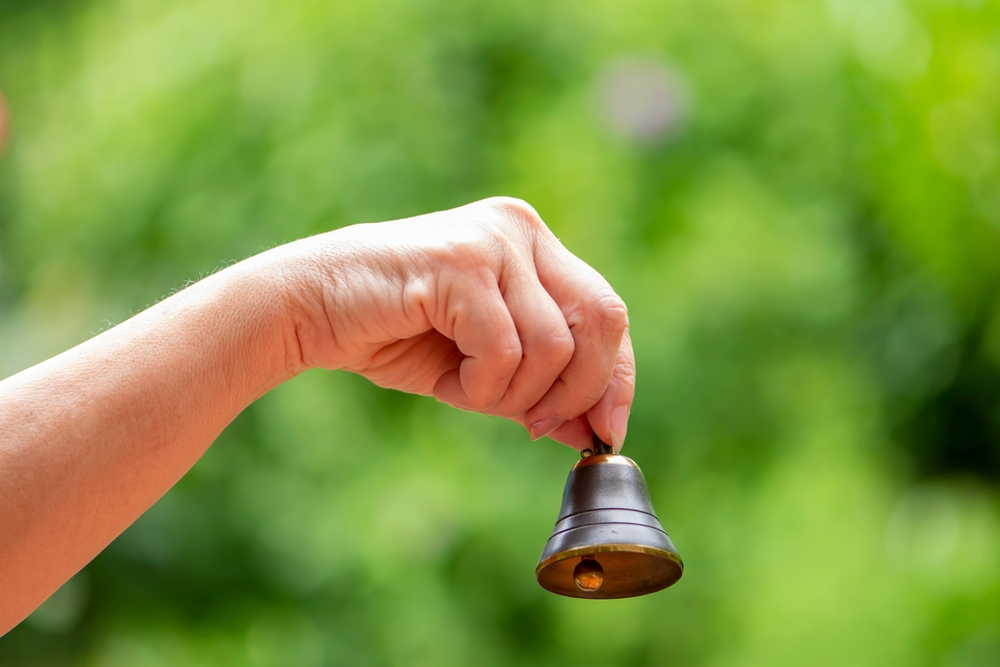
Some dogs are wary or uncomfortable with bells, but you can easily overcome this by presenting them in a positive way. Show your dog the new bell, and reward them when they show interest or make contact.
If the sound startles your dog, ring the bell gently to desensitize them while offering treats to show it isn’t anything to worry about. Don’t force your dog to interact with the bell. Let them decide when to engage; it will make the bell non-threatening and rewarding. Your dog will soon be eager to interact with it and ready for the next training stage.
2. Hang the Bell Next to the Door
Hang the bell on the wall next to the door trim. Adjust the height so your dog can ring it with their nose while keeping all four paws on the ground. Depending on how much your dog will grow, you may want to find an adjustable potty bell you can use as your dog matures.
Using a suction cup that you can easily detach to raise or lower as needed or a line of sleigh bells with bells at multiple heights will ensure your dog can always comfortably hit them as they get bigger.
3. Show Your Dog How to Use the Bell
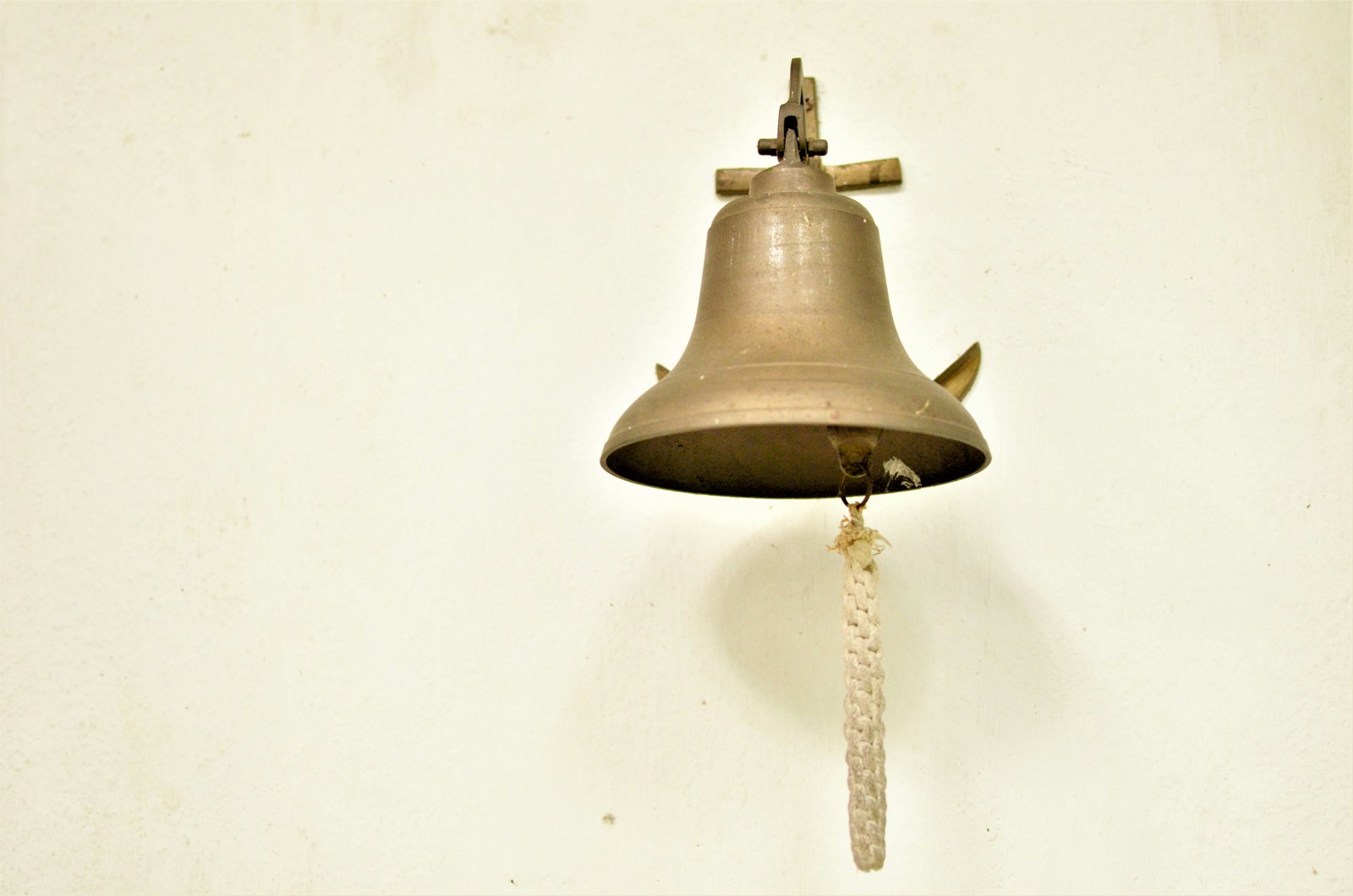
With the bell in place, you can start building the association between ringing the bell and going outside to potty. Help your dog along by drawing attention to the bell. Point at it, grab it, or gently swing it in your dog’s direction to inspire interaction.
Once your dog touches the bell with their nose, reward them with a treat. Repeat this several times until your dog understands that touching the bell equals a reward.
4. Let Your Dog Out When They Ring the Bell
Once your dog is comfortable with the bell, praise them and take them outside whenever they ring it. Doing so will help them realize that the bell ringing is their ticket to go out. Consistency is crucial. You must let them out when they ring the bell, even if you’re unsure whether they have to pee.
5. Only Reward Potty Breaks
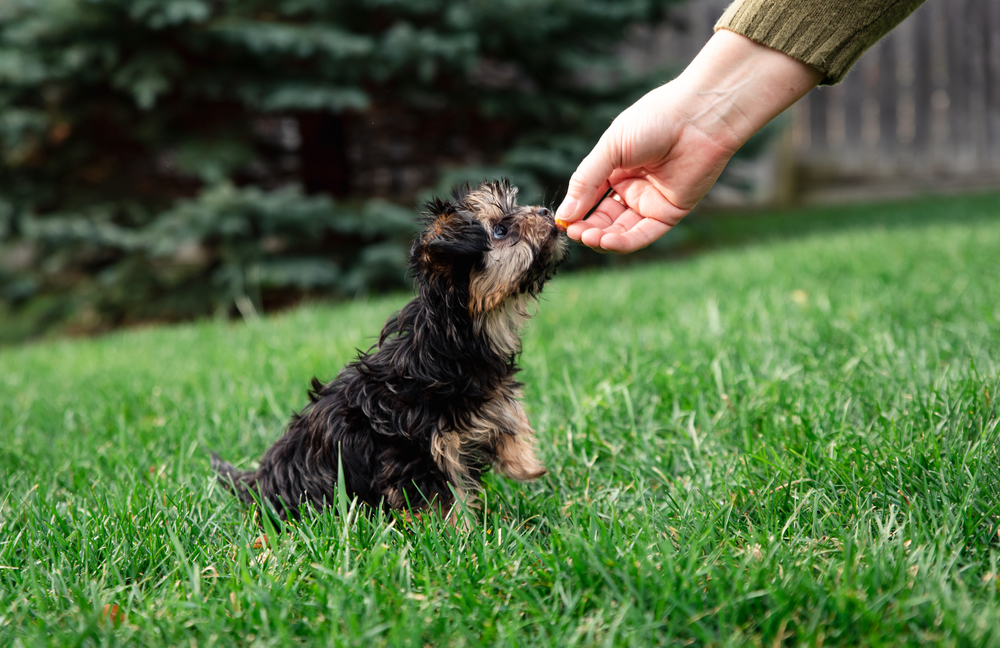
A common challenge when teaching your dog to use a potty bell is keeping them from using it when they don’t need to go to the bathroom. You don’t want them ringing the bell constantly because they simply want to go outside. It has to mean that it’s potty time and nothing else.
To dial this in, you must ensure you don’t reward your dog with play, walks, or any fun time when they ring the bell to go outside, but don’t go potty once they get there. Take them out to their potty area, wait for several minutes, and bring them inside without praise or treats if they don’t go to the bathroom.
Your dog will eventually recognize that the bell isn’t a general “I want to go outside” signal. It only means they can go out for potty time. Every other time you leave is your decision, whether for play, walks, or trips to the vet.

Tips to Improve Potty Training With a Bell
After a few weeks of consistent training, your dog can be well-versed in ringing the bell whenever they need to go to the bathroom. Along the way, here are a few tips and tricks to solidify the learning and guarantee desirable results.
6. Teach Your Dog to Use Their Nose
Dogs will interact with the bell in several ways, from pawing at it to hitting it with their tail to licking it. While each may be effective at sounding the bell, you must decide which actions are ideal.
For instance, teaching your dog to hit the bell with their paw may not be wise because it might scratch the wall or door frame with every use. When building a positive association with the bell, ensure you praise and treat your dog only when they hit the bell with their nose.
7. Get a Loud Bell
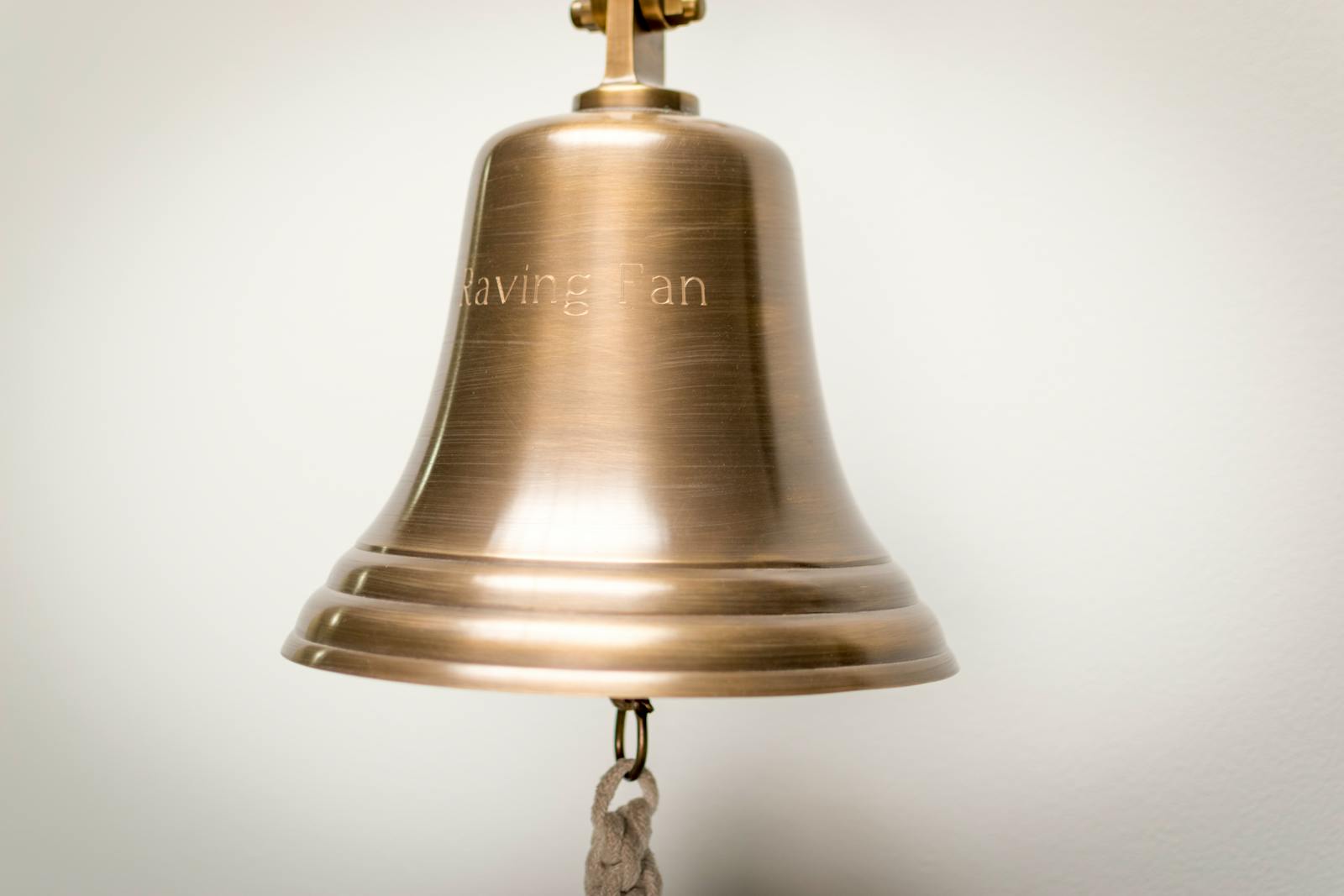
Letting your dog out every time they ring the bell is a critical part of reinforcing the connection between the two, so you’ll need a loud enough system to hear wherever you are in the home.
A louder bell that is easy for your dog to ring with minimal force will ensure you always hear it. You can also think outside the box and use buzzers, button-activated chimes, and other installations that will ring throughout the house.
8. Go Slowly and Step Back When Needed
Dogs learn at different paces, and you don’t want to rush through any steps. Each phase will take numerous attempts and often at least several days to work through. Your dog must be quick, reliable, and confident with the current step before you can move on.
They must stay successful throughout the process to maintain their eagerness and openness to learning. Take a few extra days and return to previous steps to keep your dog on the right path.
9. Teach Your Dog to Use a Bell After Potty Training
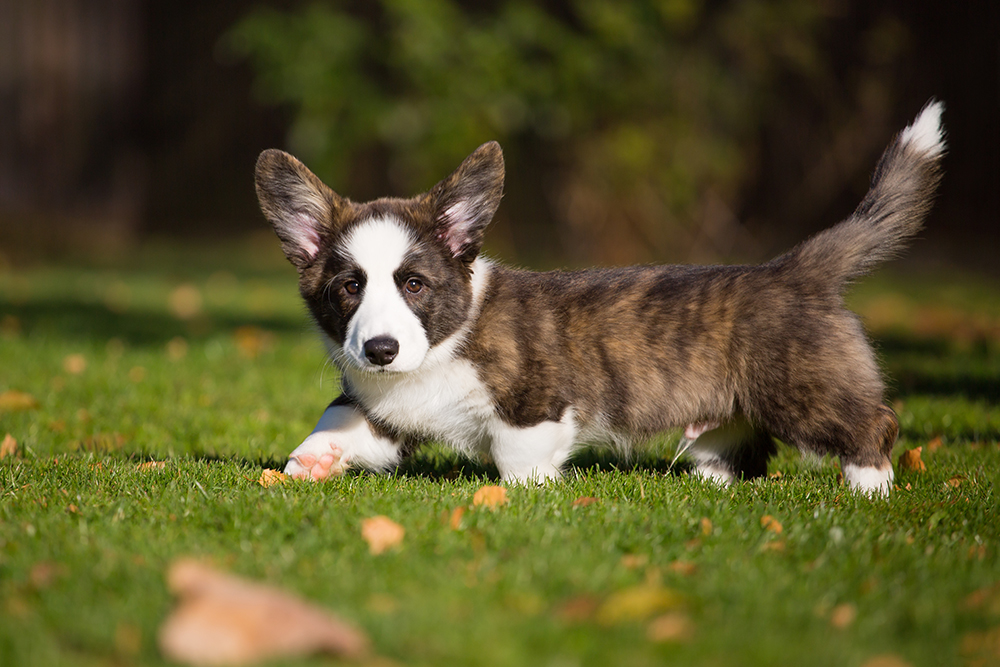
As much as you may want to jump into bell training with your new puppy, you should wait to teach the command side until your dog is already good about going to the bathroom outside.
When a puppy is young and can’t control their bladder, the owner is responsible for ensuring they go outside when necessary. Training a dog to complete a task before they can manage their urge to potty adds an unnecessary and unfair prerequisite that can stress them out.
Wait until your dog doesn’t have accidents in the house before introducing bell training. The added benefit is that you’ll have a handle on your dog’s bathroom habits, when they usually go potty, and the signs they give off, allowing you to time when you do your training during the day.
10. Teach By Doing
Rather than ask your dog to touch the bell before they can walk out the door, you can give it a quick ring or gently touch your dog’s nose against it before taking them outside. With consistency, you can build the fundamental classical conditioning connection of “bell ringing = going outside to potty.”
When you begin potty training, you will have to take your dog out hourly, so there will be numerous opportunities to reinforce that connection daily.

How Hard Is It to Potty Train a Dog Using Bells?
Potty training with a bell is usually relatively straightforward but requires discipline and patience. The bell must become a natural part of the process, meaning owners must use it consistently, make it rewarding, and promote it only for bathroom breaks.
When you take the proper approach, you can often teach your dog to use the bells in as little as 2–3 weeks.
Conclusion
Helping your puppy use a bell while potty training is another chance to engage your dog’s mind, build your bond, and find a practical solution to a typical pet-parent problem.
Dog bell potty training is a clever way to help your dog communicate with anyone within earshot. It removes any guesswork about when to take your pup outside, and they’ll appreciate the ease with which they can get out the door when it’s time to go.
Featured Image Credit: JulieK2, Shutterstock
